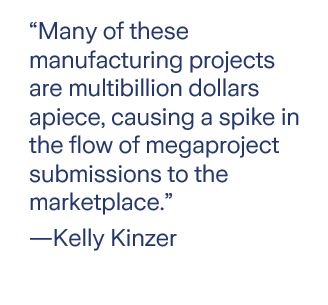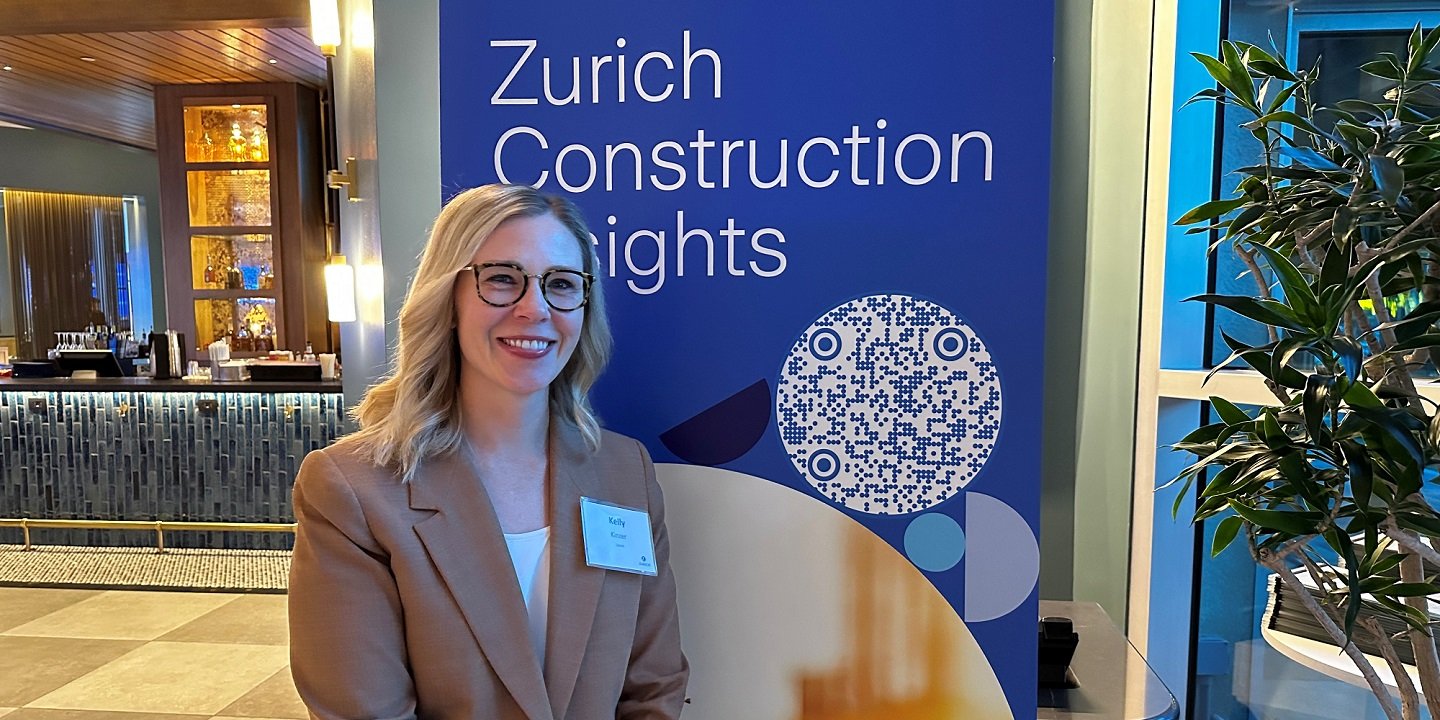IRMI Construction Risk Conference lays groundwork for a busy 2024
Economy and WorldArticleNovember 29, 2023
Zurich North America Head of Construction Kelly Kinzer said many clients voiced optimism about what 2024 and beyond has in store for the construction industry during the International Risk Management Institute’s recent Construction Risk Conference in Orlando.
That’s not to dismiss challenges around jobsite safety, social inflation and climate concerns, which were recurring themes at the 43rd annual conference. But outside of single-family residential construction, many contractors, owners and brokers shared excitement about continuing investment in certain building sectors, including manufacturing facilities for semiconductors, electric vehicle batteries and other forms of renewable energy.
“We are experiencing record growth in manufacturing coming out of the pandemic, with companies recognizing the need to onshore, backed by policy support,” Kinzer said. “Domestic manufacturers are racing to address marketplace demands. Many of these manufacturing projects are multibillion dollars apiece, causing a spike in the flow of megaproject submissions to the marketplace.”
 Since the start of 2022, spending on construction for computer, electronics and electrical manufacturing has nearly quadrupled, even after adjusting for inflation, according to the U.S. Department of the Treasury. Through September of this year, manufacturing construction investment increased almost 62% in 12 months, according to an Associated Builders and Contractors analysis cited by Construction Dive.
Since the start of 2022, spending on construction for computer, electronics and electrical manufacturing has nearly quadrupled, even after adjusting for inflation, according to the U.S. Department of the Treasury. Through September of this year, manufacturing construction investment increased almost 62% in 12 months, according to an Associated Builders and Contractors analysis cited by Construction Dive.
The bipartisan CHIPS and Science Act passed in August 2022 has played a key role in propelling this construction, providing $39 billion in manufacturing incentives plus additional tax credits. Manufacturing projects underway coast to coast include:
- Intel’s two $20 billion semiconductor fabrication plants in Chandler, Arizona, which are estimated to create more than 3,000 tech jobs and 3,000 construction jobs.
- Stellantis and Samsung SDI’s StarPlus Energy joint venture, which entails a $6.3 billion project to build two EV battery plants in Kokomo, Indiana, expected to create 2,800 jobs.
- Nucor’s $3.1 billion steel mill in Apple Grove, West Virginia, which will use scrap metal and other recycled materials to create steel sheets with a lighter carbon footprint. The mill project is expected to create as many as 2,000 construction jobs and 800 full-time positions when production begins.
Infrastructure projects ramp up
Kinzer cited additional reasons for the positive outlook among many contractors and owners.
“At long last, many of our civil contractors are starting to see funds from the Infrastructure Investment and Jobs Act being deployed,” Kinzer said. “While the flow was a bit slower than originally anticipated, our clients remain bullish on infrastructure-related opportunities in 2024 and beyond. In speaking with a few of our contracting clients, there are several billion-dollar infrastructure projects currently in the design stage that are scheduled to break ground in the not-too-distant future.”
Two years after the $1.2 trillion infrastructure Act was signed into law, the White House offered a progress update on funding of projects, saying the administration has announced nearly $400 billion for over 40,000 projects across all 50 states as of November 2023. Improvements have started on 135,800 miles of roads and 7,800 bridges, and funding has been delivered for 445 port and waterway projects, according to the administration. Seven Regional Clean Hydrogen Hubs were announced in October, with $50 billion of public and private sector investment.
Some projects related to the Infrastructure Act will take five or more years to complete.
Labor and safety remain top of mind
Manufacturing and infrastructure projects are expected to contribute to further jobs and wage growth in an industry stretched thin for skilled labor. The industry added jobs for the seventh consecutive month in October. In nonresidential building, year-over-year job growth was 5.5% in October, according to an Associated Builders and Contractors report. Overall employment of construction laborers and helpers is projected to grow 4% from 2022 to 2032, higher than the 3% average for all occupations, according to the Bureau of Labor Statistics.
Job growth amid a wave of retirements means less experienced talent on construction jobsites. This adds urgency to efforts to enhance safety protocols and training on jobsites and beyond. Safety was a focus of many educational sessions at the Construction Risk Conference. Auto fleet risk is a key area where improvements are needed. Zurich recently offered insights on this and other topics in its Construction Insights digital magazine.
Industry growth also has more contractors working internationally. A Global Builders Risk panel discussion at the Construction Risk Conference included two Zurich North America leaders: Andy Zoller, Head of International Programs, and Kristin Jasinski, a Construction Property Underwriter who moderated the discussion.
Two additional Zurich North America leaders spoke on panels. Michelle Chia, Head of Professional Liability and Cyber, offered insights during the Cyber Trends for Contractors session. Mike Davis, Head of Construction Professional Liability, spoke at a game-show-style session called “Claim or No Claim: A Professional Liability Showdown.” Although that session was on the last morning of the conference, the room was filled and audience participation was enthusiastic.
To read Zurich’s Construction Insights digital magazine, click here.
